Live on the homepage now!
Reader Supported News
At a time of declining observance of democratic values throughout professed democratic societies Zelensky and his Ukrainian countrymen and women are giving their lives to be free and to join a Western structure that gives them hope and inspiration. That inspiration sustains them in this struggle just as surely as it inspires those countries they hope to become a part of.
What is leadership? Is it given? Is it awarded? Or does it grow from struggle and triumph, adversity and perseverance? Does Volodymyr Zelensky not speak for all of us? Does he not lift us on his shoulders as he does his own people? Does he not renew our faith in democratic values as Ukrainians themselves live and die for them?
What is courage? Is courage making bold statements standing at a parliamentary lectern? Is it writing a check to support a struggle on the other side of the world? Or is it remaining in the line of fire and leading your people as a vastly superior invading army tries to overrun your country?
Who could be a more inspiring spokesperson for the thing we call freedom. Who could be a more courageous proponent of democracy? Can we now go back to the charade we have allowed democracy to become in Western societies?
If the Western Democratic Order survives in a material and functional form there will be no more important figure than Volodymyr Zelensky. His legacy is being written here, now as is ours. At a time when true leaders are increasingly rare one has risen.
Marc Ash is the founder and former Executive Director of Truthout, and is now founder and Editor of Reader Supported News.
Reader Supported News is the Publication of Origin for this work. Permission to republish is freely granted with credit and a link back to Reader Supported News.
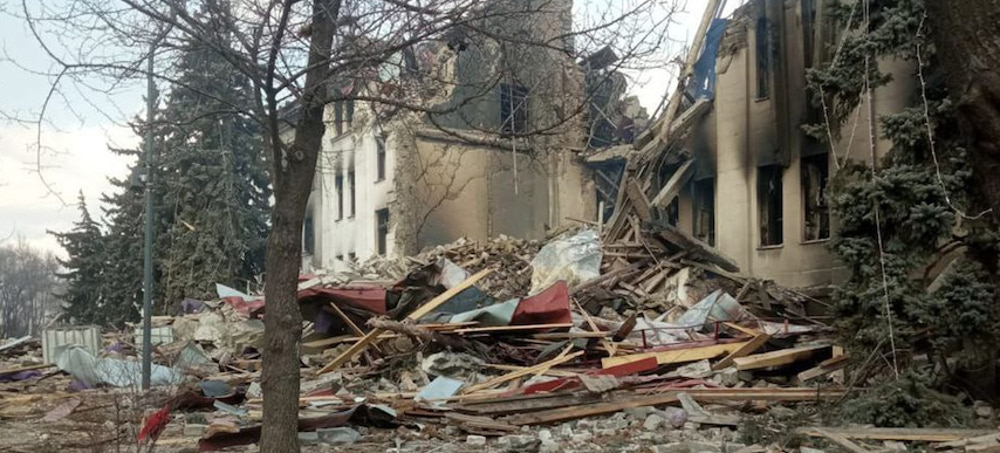 People have begun emerging from a theater in the Ukrainian city of Mariupol after it was bombed. (photo: AFP)
People have begun emerging from a theater in the Ukrainian city of Mariupol after it was bombed. (photo: AFP)
Hundreds of people were thought to have taken shelter in the theater amid the ongoing Russian siege of Mariupol. Russian forces have bombarded the coastal city for weeks, trapping hundreds of thousands of people. Ukrainian officials estimates 2,500 civilians have died in the fighting.
"After an awful night of not knowing, we finally have good news from Mariupol on the morning of the 22nd day of the war. The bomb shelter [of the theatre] was able to hold. The rubble is beginning to be cleared. People are coming out alive," the former Donetsk region head Sergiy Taruta wrote in a Facebook post Thursday.
He later told Ukrainian television that rescue efforts were being hindered by the complete breakdown of social services in the city and the dangers of further Russian attacks.
It was not yet clear whether all those who sheltered in the theater had survived. Taruta said on Thursday that 1,300 people were in the building when it was bombed and 130 have so far been rescued.
"People are doing everything themselves. My friends went to help, but due to constant shelling it was not safe. People are clearing away the rubble themselves. There is no rescue operation, because all the services that are supposed to rescue people, to treat them, to bury them, these services no longer exist," Taruta told Ukrainian television.
Liudmyla Denisova, the Ukrainian Parliament's commissioner for Human Rights, said earlier on Thursday that adults and children were coming out alive but the full extent of the impact remained unclear.
"In Mariupol, the release of civilians from the rubble of the drama theater has begun. The building withstood the impact of a high-powered air bomb and protected the lives of people hiding in the bomb shelter. Work is underway to unlock the basement," Denisova said in a statement on Telegram.
However, she said there was "currently no information about the dead or wounded under the rubble of the theater," and called the attack "an act of genocide and a terrible crime against humanity as defined by the Rome Statute of the International Criminal Court."
After the bombing on Wednesday, Mariupol City Council shared an image of the building and said Russian forces had "purposefully and cynically destroyed the Drama Theater in the heart of Mariupol."
The word "children" was spelled out on two sides of the theater before it was bombed, according to satellite images.
Ukraine's Minister of Defense Oleskii Reznikov said on Thursday that the Russian who carried out the bombing was a "monster," and stressed the presence of children in the building.
"You can see from the maps, from the drones that around this theater, big letters of 'children' were written so that the pilot of the plane which was throwing the bombs could see 'children', and still, in spite of that, this monster has bombed the theater," Reznikov told the European Parliament via video link.
Russia has denied its forces hit the building and instead accused "militants of the nationalist 'Azov' battalion" of blowing up the theater. The Azov battalion started as a volunteer militia linked to far-right ideologies before it was incorporated into a Ukrainian National Guard unit in 2014.
Maxim Kach, a Mariupol city government official, said the building was for civilians, with only women and young children hiding within it and not military personnel, while an adviser to the government said it was the largest shelter in Mariupol.
The onslaught on the city has led to a desperate humanitarian crisis. More than 350,000 residents continue to hide in shelters and basements to escape the "continuous shelling by Russian occupation forces," with an average of 50 to 100 air strikes hitting the city each day causing enormous destruction, its city council said Thursday on Telegram.
It estimates about "80% of the city's housing structures are destroyed and 30% irreparably lost."
Residents who escaped the city told CNN conditions were "unbearable" and "hell," with constant shelling, reports of people being held captive in a hospital and residents left without water, electricity or heat.
Earlier this week a pregnant woman and her newborn baby died after a maternity hospital in Mariupol was bombed. CNN earlier reported that at least three people -- including a child -- died following the attack last week.
Previous attempts to evacuate Mariupol have failed, but a planned evacuation went ahead on Thursday, with 800 private cars with more than 2,000 people making it through Russian-occupied territory to the city of Zaporizhzhia by mid-evening, according to Iryna Vereshchuk, the Ukrainian Minister of Reintegration of Temporarily Occupied Territories.
A total of 30,000 people have managed to leave the besieged city, the city's council said Thursday.
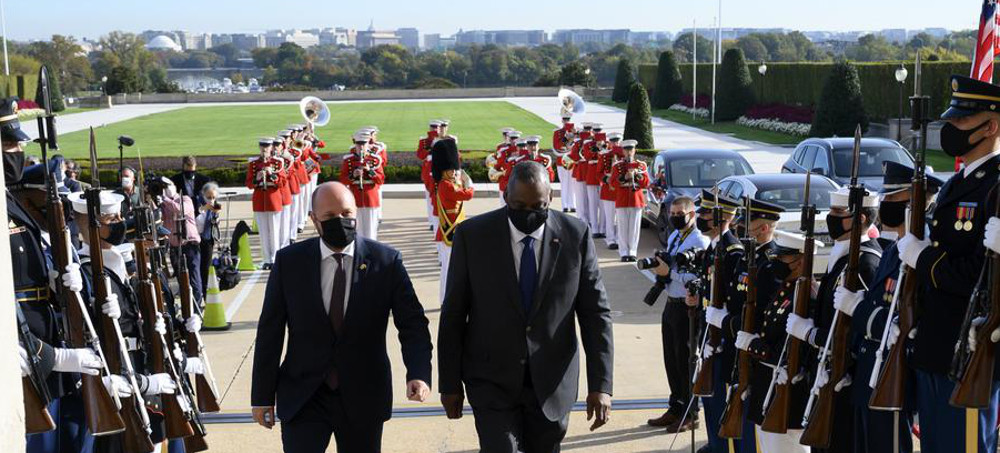 Slovakia's defense minister, Jaroslav Nad,' speaks during a news conference with U.S. Defense Secretary Lloyd Austin in Bratislava, Slovakia, on March 17. (photo: Radovan Stoklasa/Reuters)
Slovakia's defense minister, Jaroslav Nad,' speaks during a news conference with U.S. Defense Secretary Lloyd Austin in Bratislava, Slovakia, on March 17. (photo: Radovan Stoklasa/Reuters)
The Slovakian defense minister said his country could not give its S-300 missiles to Ukraine without creating a ‘security gap’ within NATO
“The only strategic air defense system that we have in Slovakia is the S-300 system,” the defense minister, Jaroslav Nad’, said, referring to powerful Soviet-origin weapons that would enable the Ukrainian military to shoot down Russian warplanes flying several miles above the ground. Ukraine had a few before the invasion and has pleaded for more as Russian forces have intensified their bombardment of key cities.
Speaking in Bratislava, Slovakia’s capital, alongside U.S. Defense Secretary Lloyd Austin, Nad’ intimated that, “Should there be a situation that we have a proper replacement — or we have a capability guaranteed for a certain period of time — then we will be willing to discuss” equipping Ukraine with the air defenses it seeks.
When asked if the United States was prepared to send Slovakia replacements, such as Patriot missiles, Austin demurred. “These are things we will continue to work with all of our allies on, and certainly this is not just a U.S. issue. It’s a NATO issue,” he said.
Help could come from elsewhere. Earlier Thursday — just minutes before the leaders’ joint appearance — Germany’s Defense Ministry indicated in a tweet that it would deploy some of its Patriot systems to Slovakia. “We continue to increase our engagement on the eastern flank,” the Germans said.
The impromptu offer from Slovakia bore a striking similarity to one from its neighbor to the north, Poland, which this month sought to provide Ukraine with MiG-29 fighter jets in exchange for American-made F-16s. Poland, in an unusual public announcement, declared it was willing to transfer the jets to U.S. custody, allowing for Washington — not Warsaw — to give them to Ukraine. U.S. officials were caught off-guard by the move and promptly declined, saying that such an arrangement would have limited value given Russia’s surface-to-air missile capability and the limited frequency with which Ukraine’s military is flying its existing jets.
Slovakia is among the handful of Eastern European countries to which the United States has appealed for help enhancing Ukraine’s ability to police the country’s airspace. Officials have said that Soviet-made surface-to-air missile systems are familiar to the Ukrainian military personnel who would operate them, alleviating the need for training and eliminating the risk that more-advanced weapons might fall into Russian hands.
S-300 missiles have emerged as a centerpiece of Ukrainian demands because they are designed to hit targets at higher altitude and longer-range than the Javelin and Stinger missiles the United States has supplied to their forces directly. Yet the countries that have them want to make sure that in helping the Ukrainians, they do not inadvertently make themselves more vulnerable to a potential Russian attack.
A senior U.S. defense official, speaking on the condition of anonymity under ground rules set by the Pentagon, this week raised the prospect that in lieu of S-300s, Western countries might be able to facilitate the transfer of other air defense systems the Ukrainians are familiar with.
Ukraine has asked for the SA-7 Grail and SA-8 Gecko in addition to the S-300, said a U.S. official familiar with the situation, speaking on the condition of anonymity because the discussions remain highly sensitive. The SA-7, also known as the 9K32 Strela-2, is a shoulder-fired missile system that can reach aircraft flying more than two miles high. The SA-8, known as the 9K33 Osa in Russian-speaking countries, can reach planes up to three miles high, according to a U.S. Army fact sheet.
The S-300 can reach altitudes of up to 18 miles, depending on the kind of missile it is firing.
The Ukrainians already consider the discussion around surface-to-air missiles to be a compromise. President Volodymyr Zelensky’s chief ask of the West has been to help enforce a no-fly zone over his country — or short of that, to give Ukraine MiG-29 warplanes so it could do so itself. The United States has resisted both of those proposals, arguing they would not be effective and risk being seen by Russia as escalatory.
On Thursday, Austin pointed to a recent Russian cruise missile strike on a training center near Lviv, near Poland’s border, to emphasize the point.
“Those were actually fired from inside of Russia,” Austin noted. “So a no-fly zone would not have prevented that activity.”
Austin suggested Thursday that there could be “a number of things” that could be used to counter Russian rockets, missiles and artillery.
“We have seen that drones have been very effective. We also have seen that having the ability to conduct counter-fire with rockets and artillery is also very effective. And so I think, increasingly, we’ll see the Ukrainian forces turn to those methods to counter that,” he said.
Lawmakers have called for the Biden administration to provide Ukraine with more radar that can be used to quickly locate where Russian forces are launching long-range weapons. To date, the White House has provided four counter-artillery radar and four counter-mortar radar systems, according to a White House fact sheet released Wednesday.
 Brittney Griner of the Phoenix Mercury, pictured at a game in 2021. Russian state media reports she will remain in custody until May 19. (photo: Mike Mattina/Getty)
Brittney Griner of the Phoenix Mercury, pictured at a game in 2021. Russian state media reports she will remain in custody until May 19. (photo: Mike Mattina/Getty)
ALSO SEE: US State Department Officials Still Seeking
Access to Brittney Griner in Russia
The Russian government announced earlier this month that it had detained Griner at a Moscow-area airport for allegedly transporting vape cartridges containing hashish oil in her luggage. It is not clear when the arrest took place, though TASS previously reported it happened in February.
The agency reported on Thursday that the Moscow region's Khimkinsky court has ruled to detain Griner for at least two more months.
"The court granted the petition of the investigation and extended the term of U.S. citizen Griner's detention until May 19," TASS quoted the court as saying.
Griner has been accused of transporting drugs, a charge that the customs service said could carry a possible sentence of five to 10 years.
Ekaterina Kalugina, a member of Public Monitoring Commission — a semi-official body with access to Russian prisons — tells NPR that she visited with Griner this week and found her sharing a cell with two other women awaiting trial on similar drug possession charges.
"They both speak English fairly well and have been helping translate. Britney doesn't speak Russian at all," Kalugina tells NPR.
Kalugina described Griner's mental state as "calm" and the conditions of her detention "standard": the basketball star is allowed two trips to a Russian sauna per week, and an hourly walk once a day.
Griner and her cellmates also have access to Russian TV and play self-fashioned boardgames, Kalugina said.
Griner is also reading books provided by her Russian lawyers —English language copies of Fydor Doestoevsky's The Demons and a Rolling Stones biography, said Kalugina.
Griner's only issue was that the prison beds are too short for her 6'7" frame, she added.
Griner is a seven-time WNBA All-Star center and two-time Olympic gold medalist who plays for both the Phoenix Mercury and Russian basketball club UMMC Ekaterinburg. She is one of many WNBA stars who play overseas during its winter off-season to make more money.
Those in Griner's camp — including her wife, USA Basketball and the Mercury — aren't saying much publicly out of concern for her safety. But other advocates and lawmakers have expressed fears that Griner may face physical danger in Russia and legal consequences as a pawn in its war with Ukraine.
Rep. Sheila Jackson Lee, who also represents Griner's home state of Texas, told The Hill that she believes the actions of Russia's Federal Customs officers were unnecessary, calling them, "in my perspective, targeted and purposeful."
"I don't underestimate anything that Russia would do," she said. "With that in mind, I've got to keep fighting on all aspects of the front to ensure her safety."
Rep. Joaquin Castro, D-Texas, wrote on Twitter earlier this month that Griner's detention "follows a pattern of Russia wrongly detaining … imprisoning U.S. citizens."
He mentioned Trevor Reed, who was convicted in 2020 of intentionally endangering the lives of police and sentenced to nine years in jail.
"U.S. citizens are not political pawns," he added, calling for Griner and Reed to be safely released.
Secretary of State Antony Blinken said earlier this month that the U.S. is working to free Americans in Russian custody, without mentioning Griner by name.
As NPR has reported, the state department's consular service will visit detained Americans, help them get legal representation and ensure that prisoners are receiving appropriate medical care, but it cannot provide its own legal assistance or assert the Americans' innocence to a court.
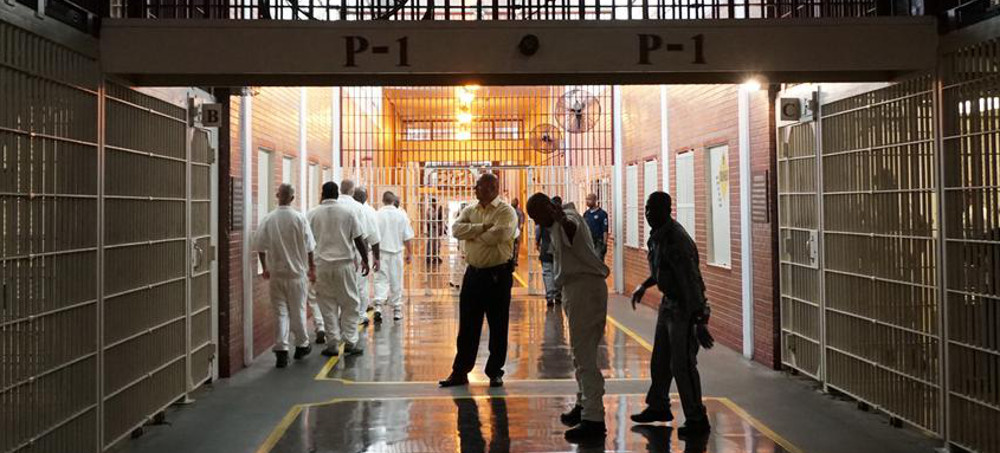 State Rep. James White, R-Hillister, is asking the state to change the names of its prisons that honor slave owners and those tied to convict leasing. (photo: Jolie McCullough/Texas Tribune)
State Rep. James White, R-Hillister, is asking the state to change the names of its prisons that honor slave owners and those tied to convict leasing. (photo: Jolie McCullough/Texas Tribune)
The judge blocked the extradition of a man arrested in a Texas shooting, citing poor conditions in the state's prisons.
The refusal to send a prisoner back is not unprecedented — but what has raised eyebrows in the legal community is the reason: An Edinburgh judge decided that poor conditions in Texas prisons might constitute an international human rights violation.
“This is the first case I know of where this specific argument about prison conditions has succeeded — normally, the courts are very sympathetic to deporting people,” said University of Nottingham criminologist Dirk van Zyl Smit. “It is a vote of no confidence in a country if you won’t send someone back.”
The case is expected to have a limited impact — in part because the judge didn’t write a formal legal opinion with the final ruling, so lawyers in other cases are less likely to be aware of the decision and don’t have anything to quote in future briefs. Still, experts say the ruling should send a powerful message to Americans about how other countries view our justice system.
When I did time in New York a decade ago, we regularly encountered things that felt like human rights violations, from solitary confinement to sex abuse to guards who turned off the water as punishment. Sometimes, we grumbled about how appalled people would be if they really knew what went on behind bars — and other times, we mused about whether they would actually care.
After I got out and became a reporter covering prisons, I discovered that the conditions in Southern lockups were far worse than any I’d seen in New York. Desperate prisoners complained of bad medical care, unidentifiable food, contaminated water, guards who planted contraband and cells so hot that people baked to death. From the letters they sent me, I knew that some of them were wondering the same thing I’d wondered a decade earlier: Does the outside world care? When courts again and again rule against prisoners seeking the most basic of things — hand sanitizer, dentures, human contact — often it seems that the answer is no, at least not in this country.
More than three decades ago, the European Court of Human Rights issued a landmark decision in the case of Jens Soering, a German man fighting extradition from England to Virginia. Because he faced the death penalty on a charge of murdering his girlfriend’s parents, the European court said he could not be extradited. But the issue wasn’t the death penalty itself — it was the fact that he’d likely spend years in “extreme conditions” on death row, “with the ever-present and mounting anguish of awaiting execution.” That, the court said, would be a violation of Article 3 of the European Convention on Human Rights, which bans torture and degrading punishment.
In the end, British officials sent Soering back to the U.S. after officials here offered an “assurance,” a promise not to seek the death penalty. After a 1990 trial, he got two life sentences and was released on parole in 2019.
Over time, his case came to represent an international stand against capital punishment because the court’s ruling made it more difficult to extradite to death penalty states. But it did give American officials a way forward: If they wanted their prisoners back, they could offer assurances. The case also hinted at a bigger question: If death row conditions were deemed inhumane, might American prison conditions outside of death row also run afoul of human rights standards?
In the years since, defendants have routinely cited concerns about degrading prison conditions in their arguments against extradition. But when the courts sided with them, it was usually over other issues — such as the inherent cruelty of life without parole, or concerns about the adequacy of mental treatment for suicidal prisoners.
Typically, according to Scottish lawyer and extradition expert Niall McCluskey, bad prison conditions alone — without some additional extenuating circumstance — are not enough to avoid an extradition.
“It’s pretty rare for this to happen with a Western country,” he said. “And it’s pretty rare for non-Western countries as well.”
One important exception was a case involving Russia. In 2012, the European Court deemed the country’s prisons so inhumane they violated international human rights conventions — in part because the cells were too small. That decision, in Ananyev v. Russia, established a standard for cell size: 3 square meters of free space per person, or about 32 square feet.
Last year, that became a factor in the Magee case.
Magee was arrested in Texas in 2016, after he admitted to shooting a security guard in the foot at an off-campus University of Texas frat party. He could have faced up to 99 years in prison for aggravated assault — but after he was released on bail, he fled to Scotland. When authorities arrested him there as a fugitive in 2019, he began a two-year fight to avoid extradition.
After hearing expert testimony about Texas prison conditions, in June 2021 an Edinburgh judge, Nigel Ross, raised concerns about persistent understaffing, forced unpaid labor, overreliance on solitary confinement, inadequate food, sweltering temperatures and a lack of independent oversight.
Scottish prosecutors declined to comment, and a representative for Ross declined to comment. Paul Dunne, the Edinburgh-based lawyer representing Magee, said that many of the conditions and procedures in the American legal system seemed cruel by European standards.
“Every other country in the developed world and even some dictatorships allow international inspectors into their prison systems to monitor them for conditions,” Dunne said. “That is a completely alien concept in America.”
Dunne added that some Texas prison cells offer as little as 1.86 square meters of free space per person (about 20 square feet) — well below the standard set in the Ananyev case.
In response to questions from the Edinburgh court, Texas prisons officials sent three detailed letters explaining prison procedures and asserting that the agency works to prevent degrading treatment. But the state did not offer any assurances about how Magee would be treated and whether he’d be housed in a big enough cell — so the Scottish court refused to extradite him.
A Texas prison spokesman explained that the agency “could not guarantee specific bed placement” because the process for assigning prisoners to a unit is “dependent on numerous factors such as security level, medical needs, and space availability.”
In late fall, Ross ruled in Magee’s favor, and he was freed.
“This case should be a wake-up call for officials — not just in Texas but all over the U.S. — to realize that many routine conditions of confinement in our nation’s prisons do not measure up to international human rights standards,” said Michele Deitch, a University of Texas at Austin senior lecturer who served as an expert witness in the case. “Some of these conditions are really out of step with what are considered acceptable practices in other Western nations.”
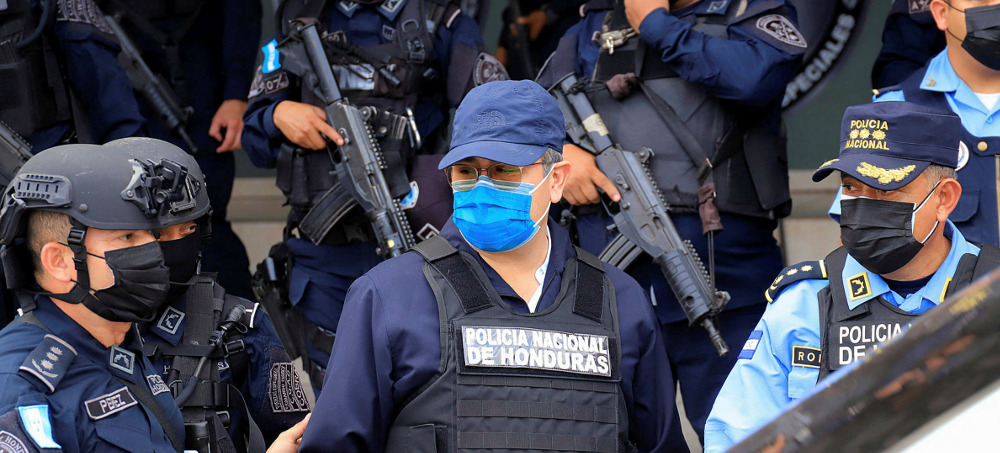 Juan Orlando Hernández, centre, is arrested by Honduran police after the U.S. requested his extradition to face charges including drug trafficking. (photo: Reuters)
Juan Orlando Hernández, centre, is arrested by Honduran police after the U.S. requested his extradition to face charges including drug trafficking. (photo: Reuters)
Why it matters: Hernández, who denies any wrongdoing, has since 2017 been accused of electoral fraud and was named as a co-conspirator in a New York drug trafficking case last year.
Stay on top of the latest market trends and economic insights with Axios Markets. Subscribe for free
- U.S. Secretary of State Antony Blinken said last month there's credible evidence that Hernández "engaged in significant corruption by committing or facilitating acts of corruption and narco-trafficking" and also that he may have used the "proceeds of illicit activity to facilitate political campaigns.
What to watch: Hernández could appeal the judge's decision to grant the U.S. extradition request.
The big picture: The former president, who left office in January, turned himself in to police last month after officers surrounded his home following the U.S. extradition request.
- Hernández has said that drug traffickers made the claims against him in revenge for their being extradited when he was in power, per AP.
- Representatives for the Biden administration did not immediately respond to Axios' request for comment.
Go deeper: Central American leaders targeted for corruption sanctions
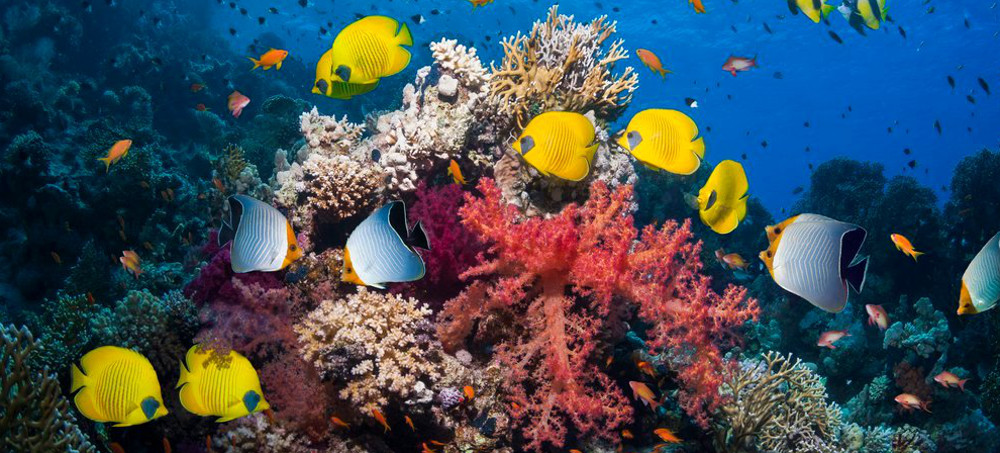 Prof. Terry Hughes says he believes bleaching is under way as the Australian government conducts monitoring flights over 2,300km reef. (photo: Getty)
Prof. Terry Hughes says he believes bleaching is under way as the Australian government conducts monitoring flights over 2,300km reef. (photo: Getty)
Prof Terry Hughes says he believes bleaching is under way as the Australian government conducts monitoring flights over 2,300km reef
The Great Barrier Reef Marine Park Authority (GBRMPA) has confirmed monitoring flights are being conducted “along the length and breadth” of the 2,300km world heritage reef.
But the authority is not due to make a formal update on conditions over the reef, or the initial findings from those flights, until Friday.
The development comes less than a week before the start of a 10-day United Nations monitoring mission to the reef ahead of a crucial meeting of the world heritage committee in June.
Prof Terry Hughes, a leading expert on coral bleaching at James Cook University, said he had received a “flood of reports from the field” of bleached corals in the last two weeks.
Rising ocean temperatures driven by human emissions of greenhouse gases have caused five mass bleaching events along the reef in 1998, 2002, 2016, 2017 and 2020.
Hughes told the Guardian he believes a sixth mass bleaching event is now unfolding, and that it was not mild or local.
The amount of heat stress over the reef tends to peak in early to mid-March each year but scientists began to worry as early as December after water temperatures rose to record levels for that month.
Hughes said: “We all breathed a sigh of relief because corals that were pale in December regained their colour in January and February. But in the last three weeks there have been reports of moderate to strong bleaching all along the reef.”
Observations from the Bureau of Meteorology show water temperatures at between 1C and 2C above average across wide areas of the reef.
A study, led by Hughes, has found more than 98% of all the individual reefs have bleached at least once.
During the last three mass bleaching events, Hughes has led aerial surveys across the length of the marine park to record the condition of corals from a low-flying aircraft.
Hughes said that task had now been passed on to GBRMPA.
He said water temperatures and the accumulated heat stress alone was not enough to say for sure if corals had bleached.
“We won’t have a full picture until the flights are done,” he said. “We have to see those maps [of bleaching] so it is premature to say how this ranks next to the other five bleaching events.”
GBRMPA has been collating information on bleaching from flights, in-water surveillance and reports for weeks.
A week ago the authority said there had been “low to moderate bleaching” reported in many areas.
In a statement on Thursday, the authority said it was “conducting aerial surveys along the length and breadth of the reef, to get a clearer picture of any bleaching in the Marine Park this summer. The status of reef health is updated each Friday.” Flights began last weekend.
The Australian Institute of Marine Science has previously said a recovery in coral cover over the reef since the last bleaching event in 2020 has been driven by fast-growing acropora corals that were also susceptible to bleaching.
Hughes said northern parts of the reef were “halfway to recovery” but a lot of “vulnerable corals” were now bleaching.
Corals can recover from mild bleaching, but if heat stress is too severe the coral can die.
While there is no formal definition of a mass bleaching event, Hughes said: “Most people would describe bleaching that includes severe levels of bleaching at a scale of hundreds of kilometres would qualify as a mass bleaching.”
Last week, environment groups said it was vital that a UN mission to the reef – requested by Australia and starting on Monday – should be able to see bleaching.
No details have been released either by Unesco or the Australian government about where the mission will go or who it will meet.
A report from the mission is expected by early May ahead of a scheduled world heritage committee meeting in June.
Last year, UN science advisors recommended the committee place the reef on a list of world heritage sites “in danger” because of the impacts of bleaching and a lack of progress in improving pollution levels.
But fierce lobbying by the Australian government saw the 21-country committee ignore the recommendation. During the meeting, Australia also sided with countries to go against several UN recommendations relating to other sites around the world.
Australia reportedly struck at least one quid pro quo – a deal with Spain to back a world heritage inscription for a site in Madrid, despite UN advisors opposing it, in exchange for Spain’s support to block an “in danger” listing for the reef.
Last month the Morrison government pledged a further $1bn for local reef conservation efforts over the next nine years.
But many reef scientists have said efforts like finding more heat-tolerant coral species, improving water quality and removing coral-eating starfish will be overrun by global heating unless greenhouse gas emissions are cut rapidly.
Follow us on facebook and twitter!
PO Box 2043 / Citrus Heights, CA 95611

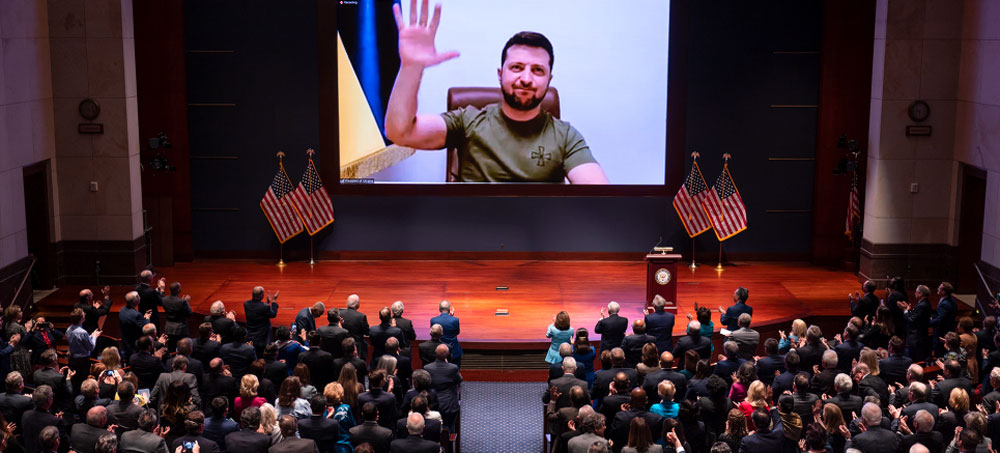

No comments:
Post a Comment
Note: Only a member of this blog may post a comment.